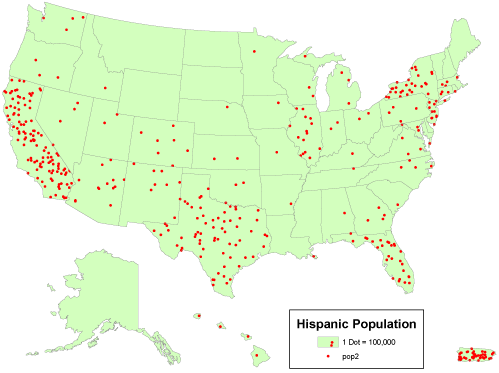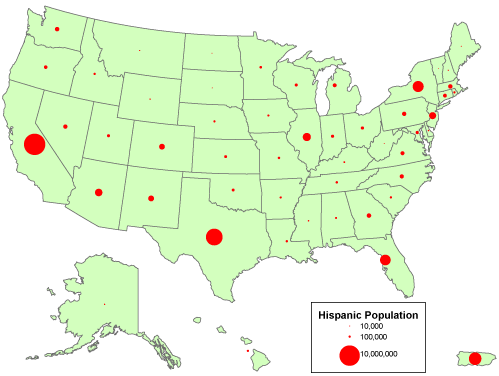The simplest thematic mapping technique for count data is to show one symbol for every individual counted. If the location of every individual is known, this method often works fine. If not, the solution is not as simple as it seems. Unfortunately, individual locations are often unknown, or they may be confidential. Software like ESRI's ArcMap, for example, is happy to overlook this shortcoming. Its "Dot Density" option causes point symbols to be positioned randomly within the geographic areas in which the counts were conducted. The size of dots and the number of individuals represented by each dot are also optional. Random dot placement may be acceptable if the scale of the map is small so that the areas in which the dots are placed are small. Often, however, this is not the case.

An alternative for mapping counts that lack individual locations is to use a single symbol, a circle, square, or some other shape, to represent the total count for each area. ArcMap calls the result of this approach a Proportional Symbol map. In the map shown below in Figure 3.16.2, the size of each symbol varies in direct proportion to the data value it represents. In other words, the area of a symbol used to represent the value "1,000,000" is exactly twice as great as a symbol that represents "500,000." To compensate for the fact that map readers typically underestimate symbol size, some cartographers recommend that symbol sizes be adjusted. ArcMap calls this option "Flannery Compensation" after James Flannery, a research cartographer who conducted psychophysical studies of map symbol perception in the 1950s, 60s, and 70s. A variant on the Proportional Symbol approach is the Graduated Symbol map type, in which different symbol sizes represent categories of data values rather than unique values. In both of these map types, symbols are usually placed at the mean locations, or centroids, of the areas they represent.
